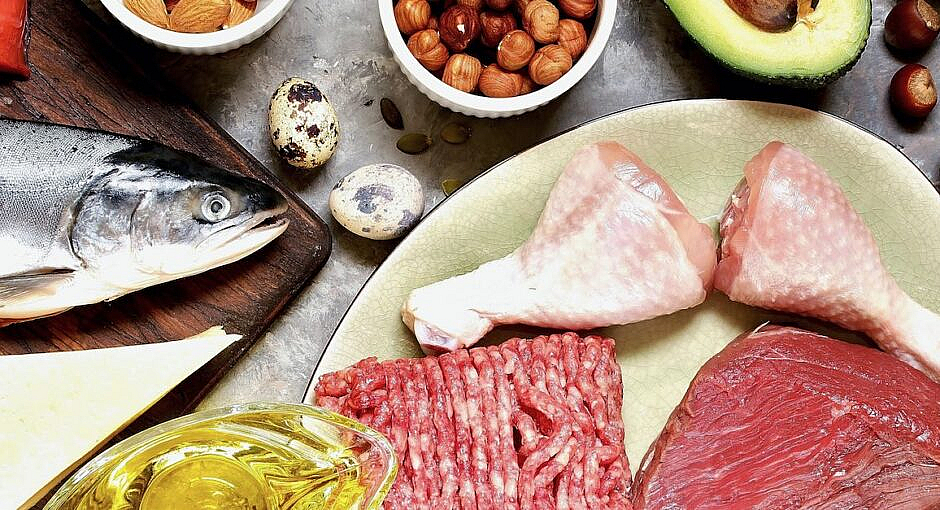In previous articles, we’ve talked about how to get healthy spiritually and mentally. In this article I’ll show you how to advance your health physically.
Physical health is the successful combination of 2 key factors:
- Diet
- Exercise
With the added benefits of:
- Sun
- Water
- Sleep
But we are all different— different body types, different sensitivities, and different tastes. So how can you determine which diet is best for you?
Let’s start by asking the question, “What’s the purpose of food?”
It’s to give our bodies the NUTRIENTS they need to survive. Originally these nutrients were found in plants alone (Genesis 1:29-30). But when the ground was cursed due to sin (Genesis 3:17-18), God later allowed men to get their nutrients from meat as well (Genesis 9:1-3).
So depending on who you are, your lifestyle and predilections, you could choose to be either a vegetarian or a carnivore— both acceptable to God.
Popular offshoots of these diets are: vegan, keto, paleo, atkins etc..
Let’s look at why you might choose one diet over another.
The Optimal Diet
- The optimal diet is dense in nutrients.
- The optimal diet considers the bioavailability of food.
- The optimal diet uses the most efficient fuel source.
- The optimal diet utilizes intermittent fasting.
In this article and the next, I’ll discuss the first component of an optimal diet:
The Optimal Diet is Dense in Nutrients
Nutrients can be separated into two basic categories — macronutrients and micronutrients.
Macronutrients are:
- Proteins
- Fats
- Carbohydrates
Macronutrients mean nutrients that we need in large amounts.
Micronutrients are:
- Vitamins
- Minerals
Micronutrients mean nutrients we need in small amounts.
We’ll discuss Macronutrients in this article, what they are, how they benefit you and some of the myths surrounding them. Micronutrients will be covered in my next article.
Macronutrients
A. Proteins
Proteins are the building blocks of the human body. Proteins are made up of amino acids. The body utilizes 20 kinds of amino acids. 9 are essential and 11 are non-essential. Essential means that the body DOESN’T produce them so they are “essential” to the diet. Non-essential means that the body DOES produce them so they don’t need to be consumed.
The 9 essential amino acids are: isoleucine, leucine, valine, phenylalanine, tryptophan, histidine, lysine, threonine and methionine.
Animal products are COMPLETE proteins because they contain all 9 essential amino acids. Plants products are INCOMPLETE proteins because most of them do not contain all 9 essential amino acids and the few that do, contain them in amounts too small for optimal health.

Bottom Line: Animal products are superior to plant products in providing the essential proteins our body needs.
B. Fats
There are 4 different types of fat:
- Saturated Fats
- Monounsaturated Fats
- Polyunsaturated Fats
- Trans Fats
Fats are made up of oxygen, carbon, and hydrogen. These elements are linked together in a single bond chain (C-C). When two single bond chains link together they become a “double bond” (C=C).
Fats are different from each other based on the number of single or double bonds they have.
Saturated Fats
Saturated fats have single bonds (C-C), no double bonds (C=C).
Due to their chemical structure saturated fats are SOLID at room temperature. Sources of saturated fats include:
- Meat fat (lard, tallow)
- Palm oil
- Coconut oil
- Butter
- Ghee (clarified butter)
- Cream
Unsaturated Fats
Monounsaturated fats have one double bond (C=C). Polyunsaturated fats have two or more double bonds (C=C, C=C).
Unsaturated fats are LIQUID at room temperature. Sources of unsaturated fats include:
- Vegetable oil
- Avocado oil
- Sunflower oil
- Fish oil
- Olive oil
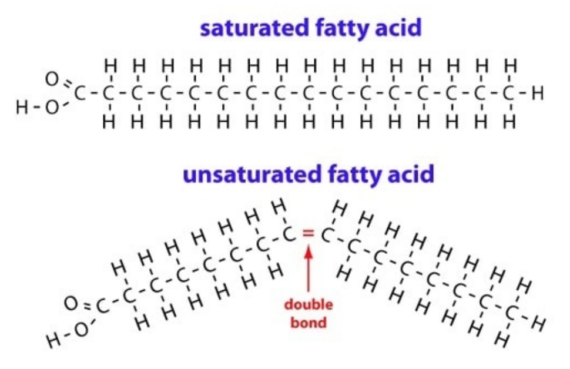
Trans Fats
Trans fats are “hydrogenated” or “partially hydrogenated” unsaturated fats, causing them to be solid at room temperature just like saturated fats. Margarine is an example.
All fats contain a combination of different fats. No one fat is pure saturated fat, pure monounsaturated fat or polyunsaturated fat. For this reason the foods we eat contain different combinations of fat in them.
For example olive oil is a combination of:
73% Monounsaturated Fat
10% Polyunsaturated Fat
14% Saturated Fat
However olive oil is considered a monounsaturated fat because it’s predominately a monounsaturated fat.
The Benefits of Fat
1. Fat aids in the absorption of vitamins.
Some vitamins require fat to dissolve them. They are called fat-soluble vitamins. There are 4 fat-soluble vitamins. They are vitamins A, D, E and K. Fat-soluble vitamins are found in foods containing fat. After they have been dissolved they are stored in the liver and fat cells for later use.
2. Fat promotes brain function.
Fat accounts for about 60 percent of your brain. Therefore it affects your ability to learn, hormones, moods and memory retention.
3. Fat supports good health.
When your body is injured or detects the invasion of pathogenic microbes. Omega-6, a polyunsaturated fat, isolates the site through inflammation. As the infection is contained, another polyunsaturated fat Omega-3, an anti-inflammatory, brings healing to the site. These two fats work together to bring healing to the body.
Omega-6 and Omega-3 are the only fatty acids that are essential to the diet as the body does not produce them. Other types of fat can be made by the body as needed.
4. Fat protects your body.
Fat cushions the organs in your body and helps protect them from injury or trauma. Fat helps to maintain your body temperature. Fat also insulates and protects your nerves allowing them to engage in impulse transmission and reception.
5. Fat gives you energy.
A major benefit of fat is its ability to supply energy. Though some think carbohydrates are the body’s primary source of fuel, the fact is that fat provides twice as much energy as carbohydrates or proteins.
Are Some Fats Bad?
All fats are good in their naturally occurring state. But there are two types of fat that we shouldn’t consume.
1. Trans fat.
Trans fats are unsaturated fats that have been chemically altered through the process of hydrogenation to resemble a saturated fat (solid at room temperature). However the hydrogen gas used to make the transformation scrambles the hydrogen atoms in the fat chain and oxidizes the fat.
Oxidation occurs when an atom, molecule or ion loses one or more of its electrons due to the invasion of oxygen. The oxygen causes the molecule to become a free radical (unstable). Free radicals damage the growth, development and survival of cells in the body.

Unsaturated fats are vulnerable to oxidation because they are made up of double bonds. Double bonds are less stable than the single bond structure of saturated fats. The more double bonds a fat has, the more susceptible it is too oxygen molecules. Once oxygen infiltrates the fatty acid chain, the fat becomes damaged or oxidized, rendering the fat a toxin rather than a nutrient. The reason manufacturers hydrogenate fat is to improve its shelf life, but it is not good for the body. Hydrogenated fats are found in margarine and vegetable shortening.
2. Polyunsaturated Fat
Like trans fats, VEGETABLE OILS, a polyunsaturated fat, are highly oxidized through the process used to make them. The ability to squeeze oil from a vegetable didn’t exist until the twentieth century. With modern machinery manufacturers refine, bleach, deodorize and boil vegetables in order to extract the oil. By the time the process is completed any nutrients in them are long gone and what’s left is a toxin incredibly difficult, if not impossible to digest. Studies show that vegetable oil actually destroys the good fat in our bodies. This is a process called “free radical cascade.”
Matters are made worse when we eat vegetable oils after they have been HEATED. That’s because heat accelerates oxidation and free radical cascade in the body (think french fires cooked in vegetable oil).
Healthy alternative cooking oils are saturated fats like butter and coconut oil. Although olive oil is a healthy oil (monounsaturated), it degrades when heated.
Vegetable oils are bad not because they contain Omega-6 fatty acids as some people surmise, but because by their very nature they are OXIDIZED. Often touted as a healthy heart choice due to the reduction of cholesterol, vegetable oils actually contribute to heart disease because of their toxic nature.
Healthy Omega-6 fatty acids are found in unprocessed nuts and vegetables. The only caution is to balance them with Omega-3 fatty acids. That’s because where Omega-6 fatty acids create inflammation in the body, Omega-3 fatty acids reduce inflammation. Our body needs both, but a BALANCE of both.
The proper balance of Omega-6 to Omega-3 fatty acids is 1 to 1. However due to the large use of vegetable oils in grocery staples such as cookies, chips, crackers, mayonnaise, salad dressings and the fact that most restaurants use vegetable oils to cook with, the NATIONAL balance is closer to 40 to 1. So change the balance in your own life by reducing the amount of foods you eat containing unhealthy Omega-6 vegetable oils (like soy oil). Instead eat healthy Omega-6 foods (nuts and vegetables) and foods rich in Omega-3 (oily fish or a cod liver oil supplement).
Myths About Fat
Many people are under the impression that saturated fat clogs the arteries— even doctors. This idea comes from a study (Kanwu study) that compared test groups eating saturated and unsaturated fats. While the findings favor those eating unsaturated fat, the results were “almost statistically insignificant”— hardly conclusive.
Not mentioned are 4 other studies showing saturated fats as having no effect on heart health at all.
What we now know is that heart health suffers when saturated fat is COMBINED with carbohydrates. The sugar in the carbohydrates irritate the lining of an artery wall causing inflammation. The cholesterol flowing through the arteries attempts to heal the site by forming a scab (plaque). Over time with the plaque enlarging, the arteries clog and a heart attack is eminent. While at the scene of the crime, cholesterol did not cause the heart attack, sugar did. Replace sugar with a low carbohydrate diet and the consumption of fat will cause no harm.
Interestingly, the American Heart Association recommends just the opposite. In America we encourage people to adopt a low fat/high carb diet. Maybe that’s why much of the population is insulin resistant— a pre diabetic condition. Diabetes is caused when our body shuts down its ability to make insulin. Our body shuts down insulin production when it has been overwhelmed with carbs and other forms of sugar over a long period of time. This problem can be reversed by adopting a high fat/low carb way of eating. That’s why hi-fat/low carb diets are on the rise (keto and carnivore).
Bottom Line: Saturated and unsaturated fats occur both in animals and plants. Animal fats are relatively higher in saturated fats than plant fats. Plant fats are relatively higher in unsaturated fats than animal fats. The majority of the physical and chemical characteristics of animal and plant foods are the same. Saturated fats are healthy and so are unsaturated fats as long as they haven’t been processed. Only two fatty acids are known to be “essential”, in that the human body cannot make them: Omega-6 and Omega-3.
C. Carbohydrates
There are two types of carbohydrates:
1. Simple
Simple carbohydrates consist of single or double sugar units. A carbohydrate made up of a single sugar unit is referred to as a monosaccharide. A carbohydrate made up of double sugar units is referred to as a disaccharide.
• Monosaccharides are: fructose, glucose and galactose.
• Disaccharides are: sucrose, maltose and lactose.
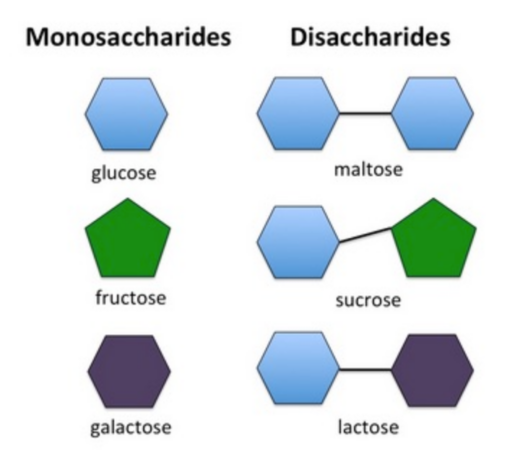
Examples of simple carbohydrates are sugar, soft drinks, cake and candy.
Simple carbohydrates are low in nutritional content.
2. Complex
Complex carbohydrates consist of a chain of glucose sugar units. Depending on how they’re structured, they can be referred to as either a:
- Starch
- Glycogen
- Fiber
A starch is the storage form of glucose sugar units in PLANTS.
Glycogen is the storage form of glucose sugar units in HUMANS/ANIMALS.
Fiber are glucose sugar units bound together in such a way that they can’t be broken apart or digested.
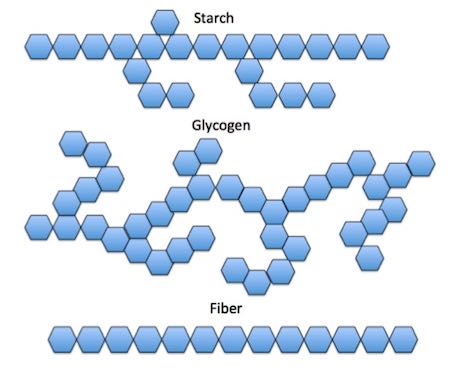
Examples of complex carbohydrates are kidney beans, brown rice, potatoes, and carrots.
Complex carbohydrates are higher in nutritional content containing fiber, vitamins and minerals.
So now that we know what carbohydrates are, let’s ask the question,
“Why do we eat carbohydrates?”
1. Are carbohydrates essential to our diet?
Once again, “essential” means that the body can’t produce the nutrient, so it’s essential that the nutrient is in your diet.
We’ve seen that the other macronutrient categories, protein and fat, require “essential” nutrients to maintain health. But what about carbohydrates? Are carbohydrates essential to our diet?
Science shows us that carbohydrates are actually NON-ESSENTIAL to the diet. That’s because the sugar carbohydrates provide can be produced just as easily by the other macronutrients, protein and fat, through a process called gluconeogenesis.
Gluconeogenesis is the breakdown of protein or fat into sugar. So if your body needs sugar it doesn’t have to get it from carbohydrates, your body can produce it from either protein or fat.
2. But don’t we need carbohydrates for energy?
Sure, your body will burn carbohydrates for quick energy. But this energy is not sustainable. With sugar (carbs) your energy spikes and then it crashes. Protein and fat are more stable energy sources, with fat providing twice as much energy as carbohydrates or protein.
So again, let’s ask the question, “Why do we eat carbohydrates?”
We eat carbs because, “They TASTE GOOD!”
But what happens to them in the body?
To answer that question lets talk about INSULIN, what it is and its purpose in the body.
Insulin is a hormone the pancreas secretes when we eat food. Its purpose is to open up the cell wall so nutrients can enter. To thrive our cells need all the nutrients: protein (amino acids), fatty acids, minerals and vitamins. They also need carbohydrates (sugar).
When carbs enter our system, blood sugar levels to rise. Insulin brings these levels down by allowing sugar to enter our cells. However problems arise when we eat too many carbs, too often. Our cells become over stimulated with insulin, they shut down in order to protect themselves. Our cells become insulin resistant. The result is that our cells become starved for nutrients. But it doesn’t stop there.
Because sugar, nor any other nutrient can enter the cell, our body thinks more insulin is needed to open up the cell wall. As a result the pancreas secretes more and more insulin. At first no ill effects are noticed, but as time goes by the pancreas is overworked and becomes exhausted. It stops producing insulin. With no insulin, sugar levels rise and diabetes is the result.
What can we do to keep this from happening?
We can eat carbs low on the glycemic index. What is the glycemic index?
The glycemic index is a value assigned to foods based on how slowly or quickly they cause our blood sugars to rise in our bodies. The index ranks food on a scale of 0 to 100. Foods with a high glycemic index, or GI, are quickly digested and absorbed, causing a rapid rise in blood sugar. Foods low on the glycemic index are digested and absorbed at a slower rate, and subsequently, cause a slower rise in blood sugar levels.
Here is a list of foods and their rankings on the glycemic index. 80% of the carbs you eat should fall in the 0-44 range. Only 20% of what you eat should fall in the 45-60 range. Try not to eat any carbs that fall in the 61 or higher range.
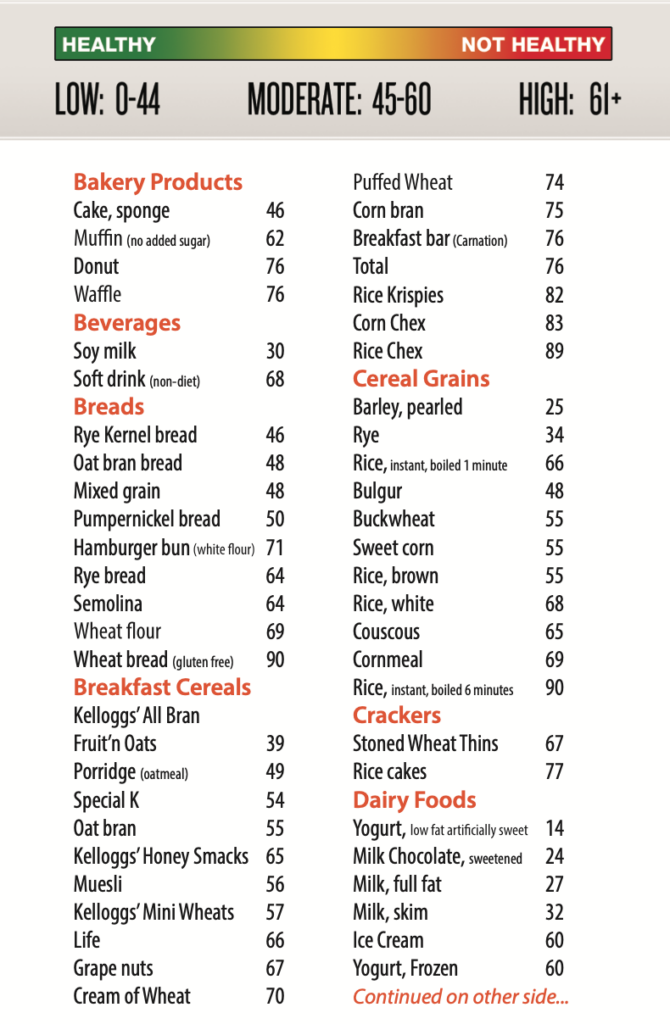

Bottom Line: There are two types of carbohydrates, simple and complex. Carbohydrates are NOT essential to the diet. If we eat too many carbs, too often we run the risk of becoming insulin resistant or a diabetic. Eating carbs LOW on the glycemic index helps you keep your insulin at normal levels. As a result your body will not become insulin resistant and you will be able to absorb nutrients at the cellular level. Absorbing nutrients at the cellar level provides the energy you need and to feel good throughout the day.
Conclusion
An optimal diet is NUTRIENT DENSE. In this article we’ve discussed nutrient profiles in the macronutrient family: protein, fat and carbohydrates. In my next article, How to Get Healthy Physically Part 2, I’ll discuss nutrient profiles in the micronutrient family: vitamins and minerals.

